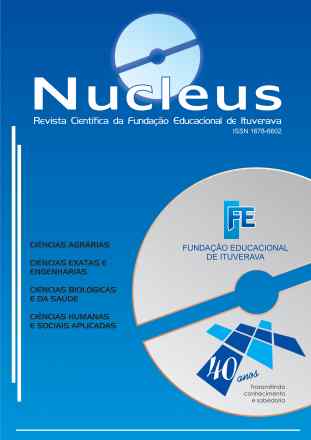CO-INOCULAÇÃO NO DESENVOLVIMENTO VEGETATIVO E NODULAÇÃO DE PLÂNTULAS DE SOJA SUBMETIDAS À CALAGEM, FERTILIZAÇÃO NITROGENADA E APLICAÇÃO DE MICRONUTRIENTES
Nucleus
CO-INOCULAÇÃO NO DESENVOLVIMENTO VEGETATIVO E NODULAÇÃO DE PLÂNTULAS DE SOJA SUBMETIDAS À CALAGEM, FERTILIZAÇÃO NITROGENADA E APLICAÇÃO DE MICRONUTRIENTES
Autor Correspondente: Paloma Helena da Silva Libório | [email protected]
Palavras-chave: Glycine max. Calagem. Adubação nitrogenada. Bactérias promotoras de crescimento. Micronutrientes. Glycine max. Liming. Nitrogen fertilization. Growth promoting bactéria. Micronutrients
Resumos Cadastrados
Resumo Português:
Com o objetivo de avaliar a co-inoculação de soja, ou seja, inoculação mista com bactérias do gênero Bradyrhizobium e Azospirillum brasilense, em detrimento da inoculação tradicional com Bradyrhizobium foram instalados dois experimentos em outubro de 2014, em casa de vegetação. O delineamento experimental utilizado foi o inteiramente casualizado com oito tratamentos e oito repetições sob rodÃzio diário dos vasos. Os tratamentos envolveram diferentes combinações quanto a formulações comerciais de adubo, com ou sem aplicação de inoculante (s) e micronutrientes cobalto e molibdênio (Co-Mo) nas sementes, sendo: 0-20-20; 4-20-20; 0-20-20 + inoculante (s); 4-20-20 + inoculante (s); 0-20-20 + inoculante (s) + Co-Mo; 4-20-20 + inoculante (s) + Co-Mo e 0-20-20 + Co-Mo e 4-20-20 + Co-Mo. As avaliações constituÃram-se na % de plântulas normais, número e massa seca de nódulos/planta, massa seca da parte aérea e raiz/planta. Na calagem realizada com apenas 30 dias de antecedência da semeadura, o calcário não teve tempo suficiente de reagir com o solo, que mostrou deficiência em cálcio, além de toxicidade de alumÃnio e manganês, reduzindo a % de plântulas normais nos vasos, cujo lote de sementes já se encontrava com baixa qualidade fisiológica determinada nos testes de germinação e emergência. Apesar disso, a prática de co-inoculação combinada ao uso de formulação (0-20-20) e sem Co-Mo nas sementes destacou-se em relação aos parâmetros avaliados.
Resumo Inglês:
In order to evaluate the co-inoculation of soybeans, or mixed inoculation with bacteria of the genus Bradyrhizobium and Azospirillum brasilense, at the expense of traditional inoculation with Bradyrhizobium, two experiments were installed in october 2014, in a greenhouse. The experimental design was completely randomized with eight treatments and eight replications in pots rotation system. Treatments involving different combinations as commercial fertilizer formulations, with or without inoculant application (s) and micronutrients cobalt and molybdenum (Co-Mo) in the seeds, being: 0-20-20; 4-20-20; 0-20-20 + inoculant (s); 4-20-20 + inoculant (s); 0-20-20 + inoculant (s) + Co-Mo; 4-20-20 + inoculant (s) + Co-Mo; 0-20-20 + Co-Mo and 4-20-20 + Co-Mo. Evaluations constituted the% of normal seedlings, number and dry weight of nodules / plant, dry weight of shoot and root / plant. In liming performed with only 30 days before sowing, limestone has not had sufficient time to react with soil, which showed deficiency in calcium, in addition to aluminum and manganese toxicity, reducing the % normal seedlings in the pots, which batch seed was already low in certain physiological quality of germination and emergence tests. Nevertheless, the practice of co-inoculation combined with the formulation (0-20-20) and without Co-Mo in the seeds stood out in relation to the evaluated parameters.

